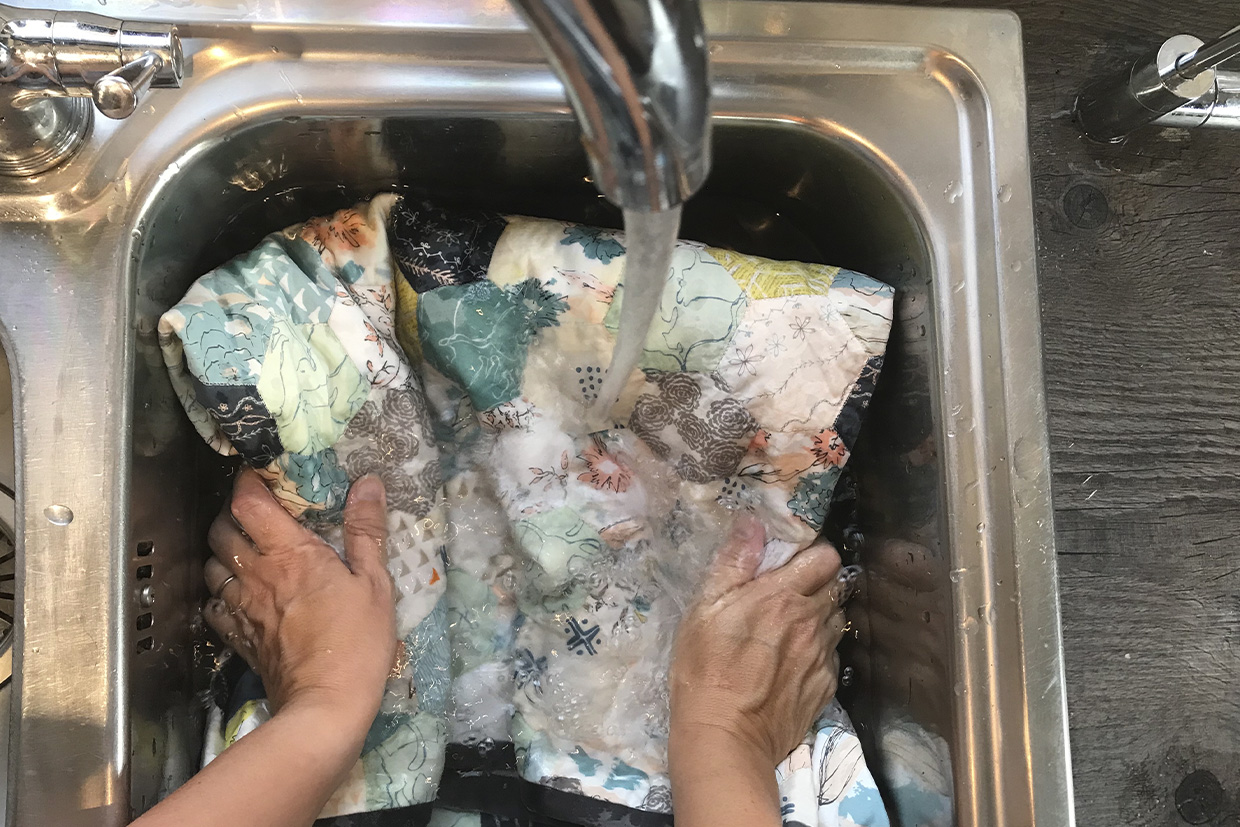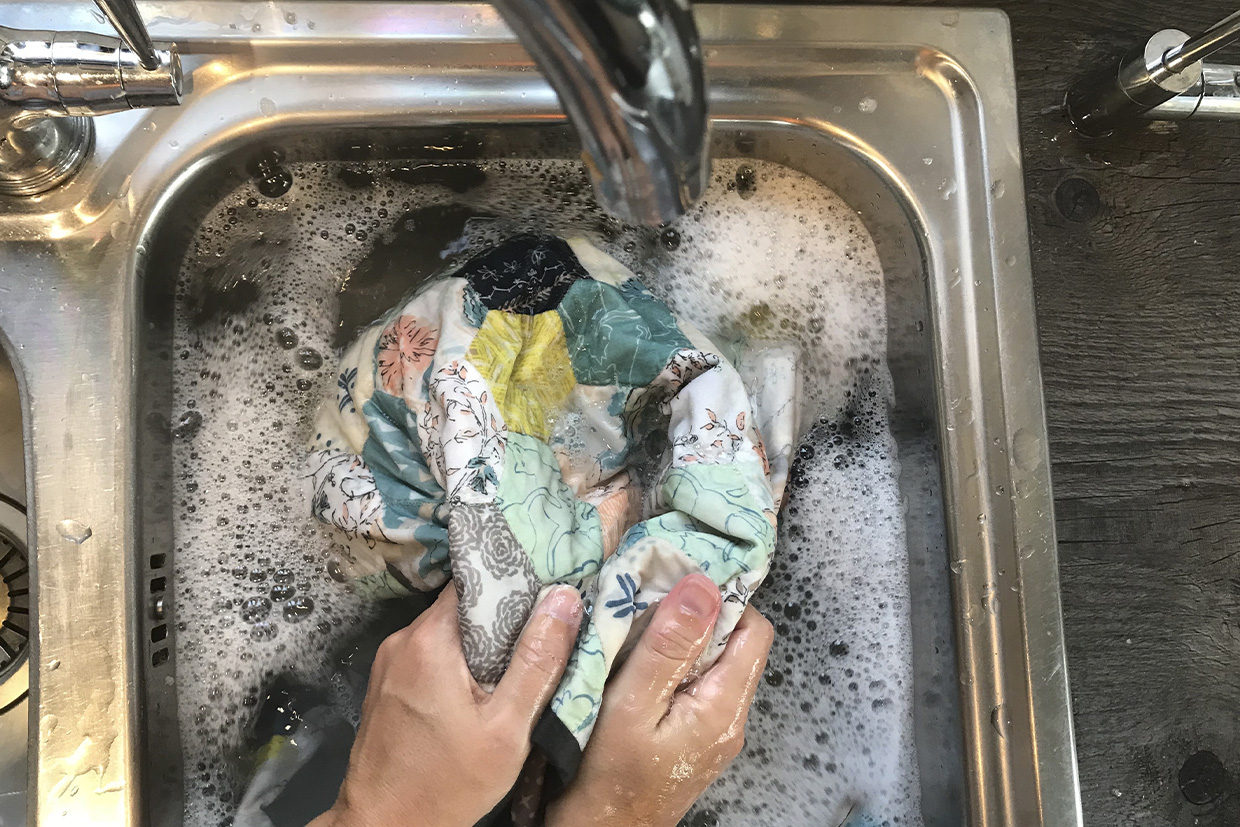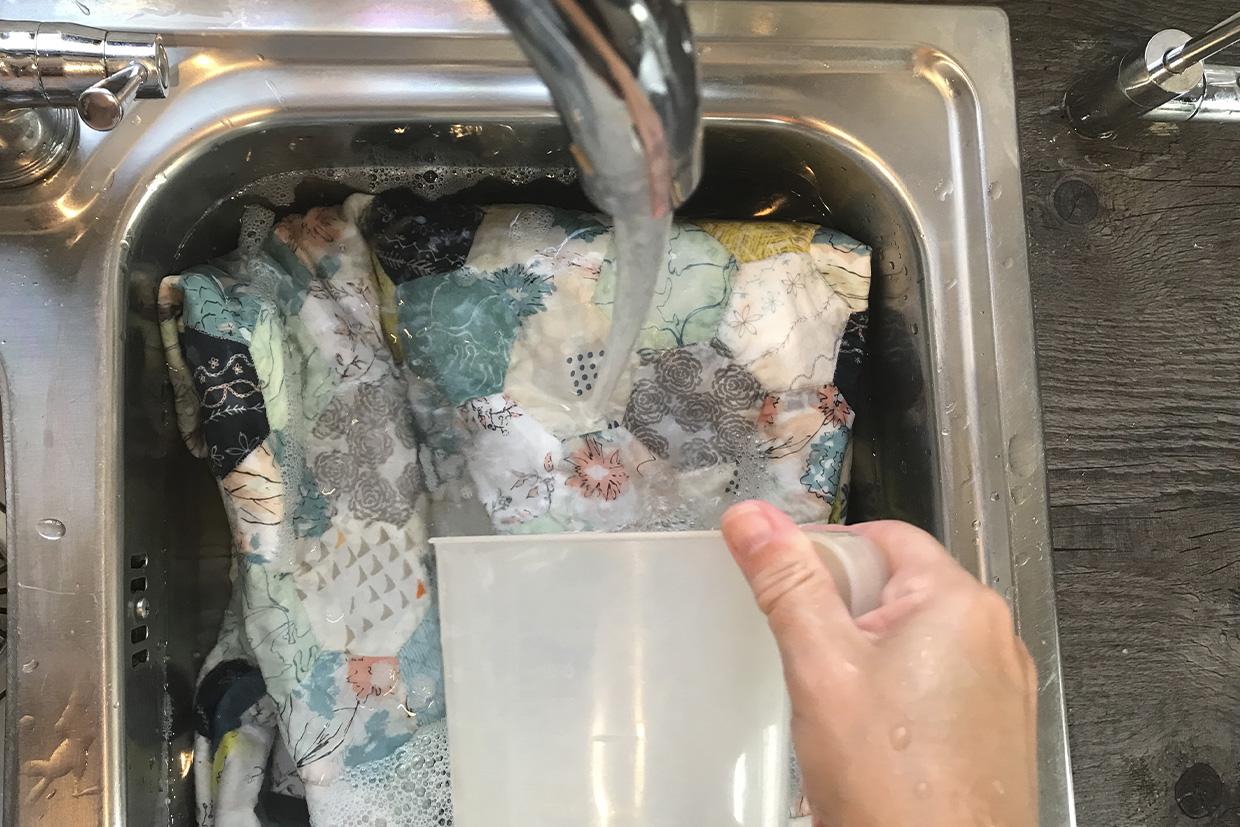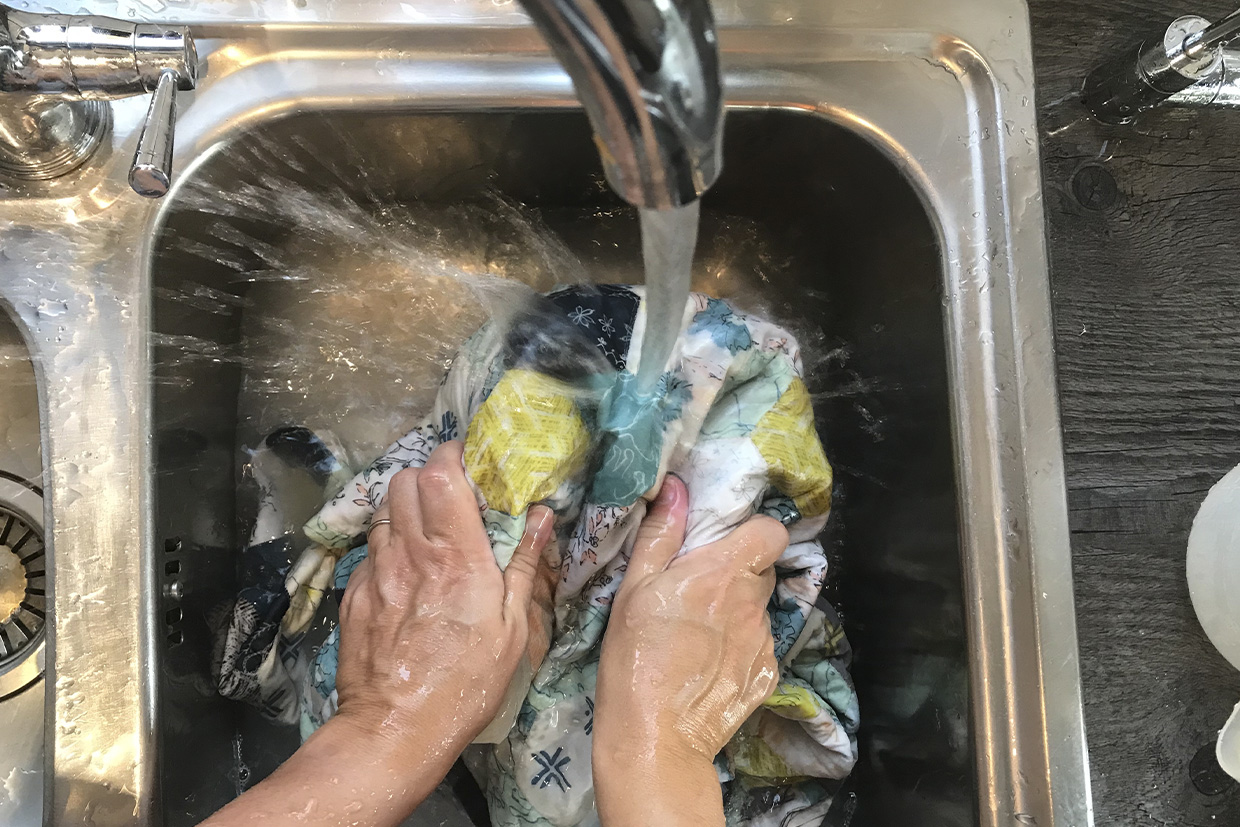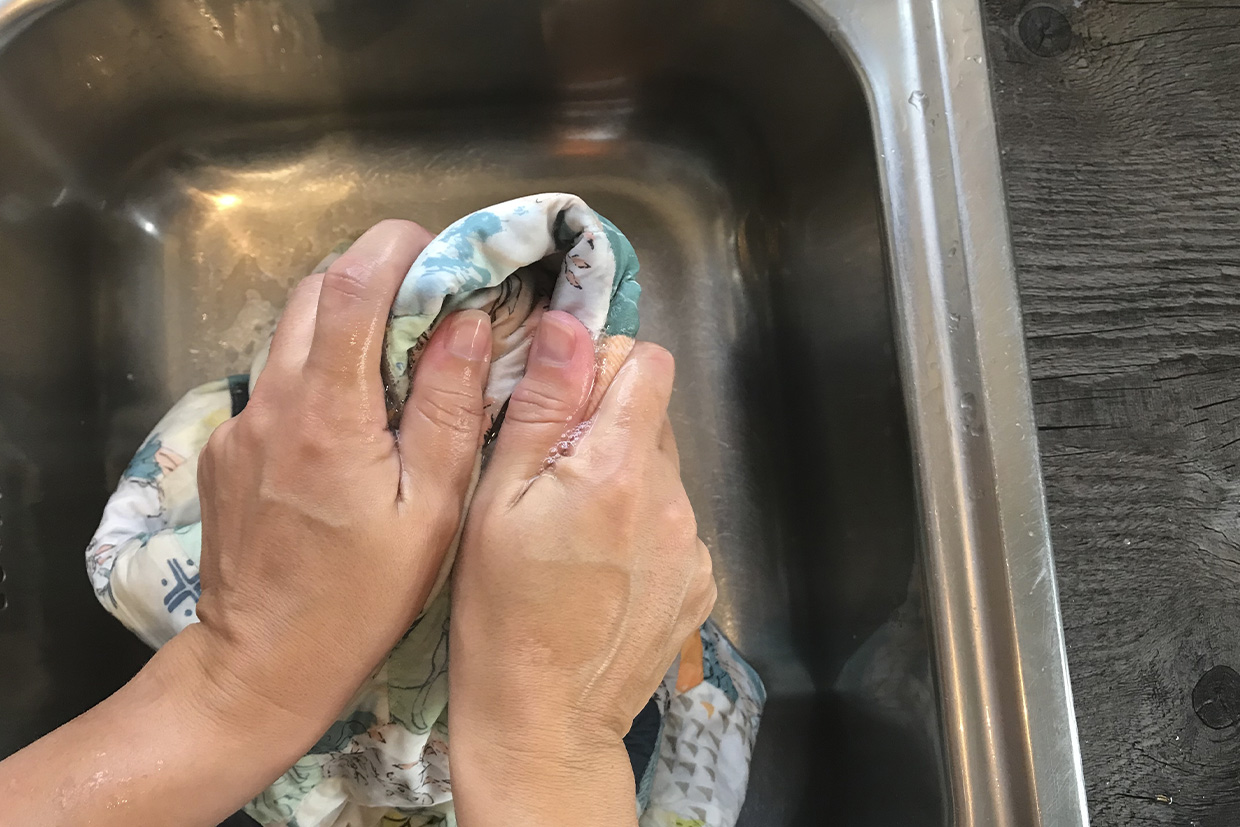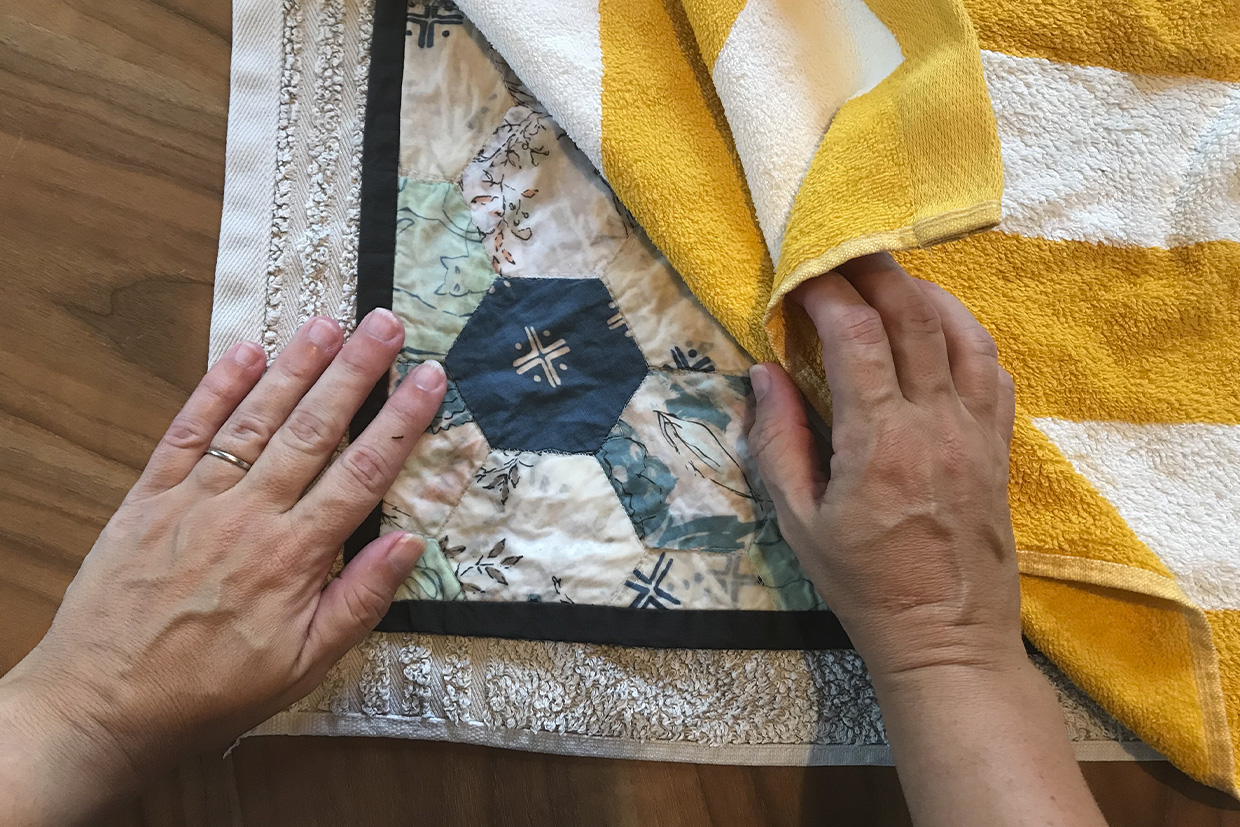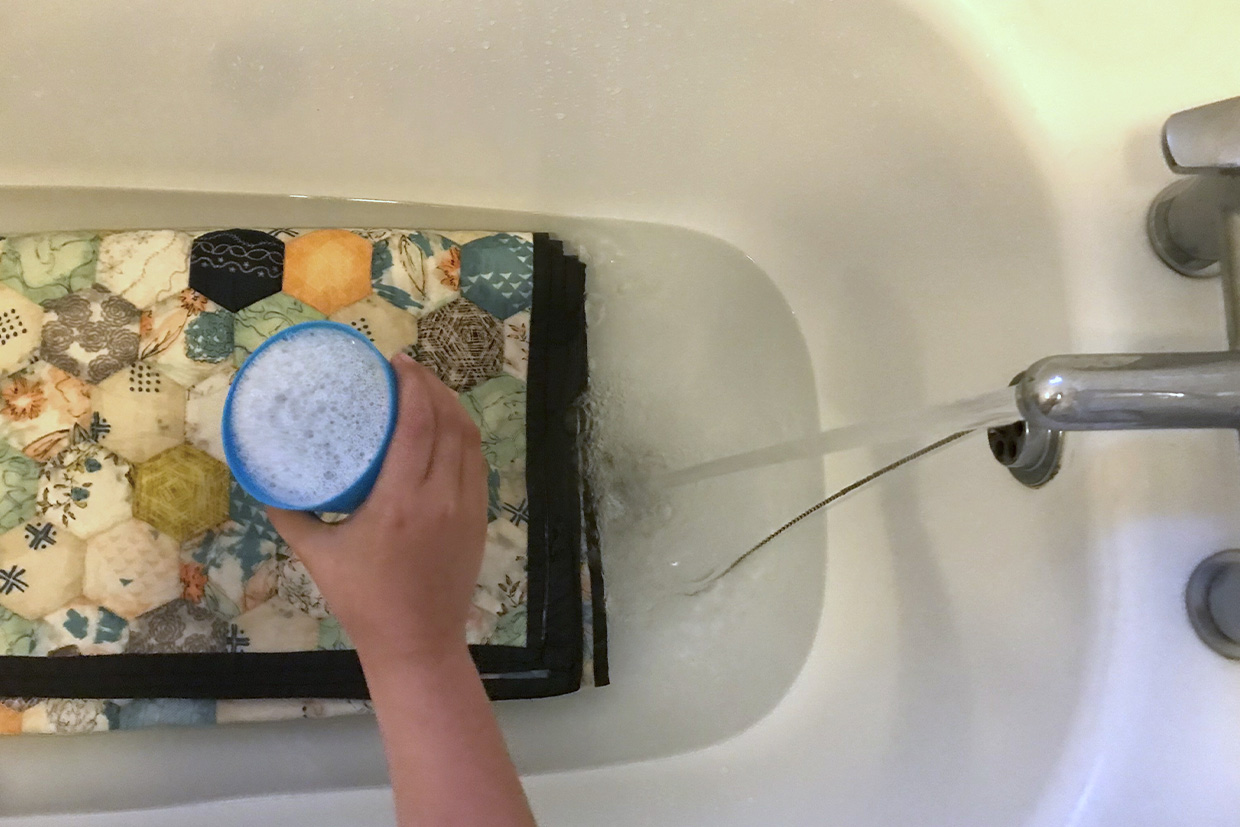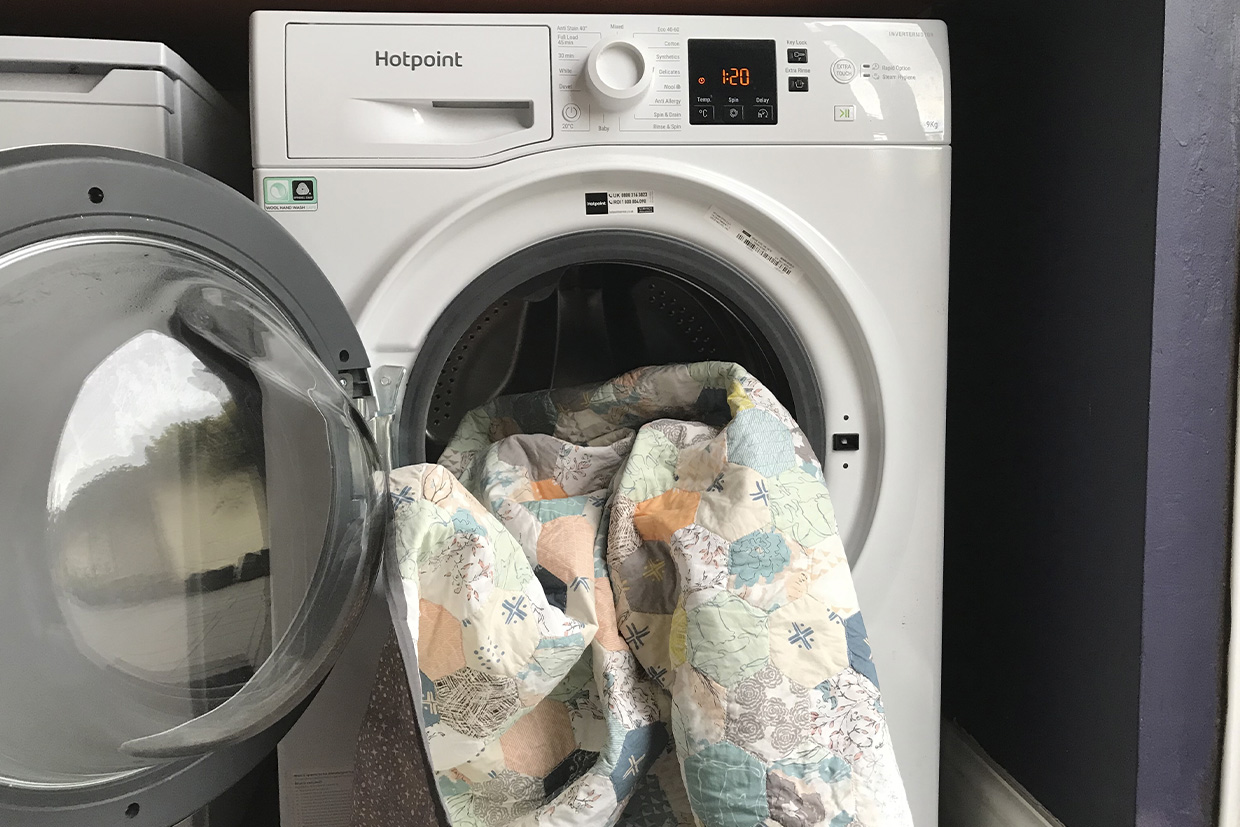If you’re lucky enough to own a handmade or heirloom quilt, the prospect of washing it can be scary at first. What if you damage it by accident? What if the colours run? What if the stitching comes undone?
But with a little care and a few tricks up your sleeve, you can confidently wash your quilts and avoid any damage in the process.
Here at Gathered, we’ve put together this essential guide, filled with practical tips to help you keep irreplaceable quilts in your family for generations and how to get the greatest shelf life out of quality quilts.
Our gentle washing method can also be used for washing everyday, shop-brought quilts too. Hand washing is easier than machine washing, so you can keep quilts fresher for longer.
We’ll also show you how to wash a quilt in the washing machine for maximum convenience and how to wash a quilt in the bath, as well as offering a few additional tips on how to care for old quilts.
This tutorial is part of our series designed to help you develop your quilting techniques. Check out Gathered’s full how to quilt section for essential guides for quality quilt making.
Can you wash a quilt?
Yes, you can wash quilts safely without causing them any harm. However, when washing a handmade quilt, you should ensure that you:
- Make sure the colour of the fabric won’t fade or run
- Use a gentle, unscented detergent
- Handle the quilt with care when wet
- Avoid putting strain on the quilt’s stitching
- Dry the quilt without excess heat.
Use a gentle liquid detergent that isn’t perfumed, and wash your quilts by hand if at all possible to minimise damage. A good detergent to use for this would be Ecover Zero Laundry Detergent or something similar.
Avoid washing your quilts too often
You don’t need to wash quilts as regularly as bedsheets or pillowcases. If you do, you risk the quilt’s colours fading. If you use your quilt daily, on your sofa or bed, washing it once a season or a year will be more than enough to keep it clean without causing ruinous stress to the fabric and stitching.
Don’t iron your quilt after you wash it
Ironing after washing causes extra strain which can damage quilts. If you do want to try giving it a press, only do so if you know that the quilt has been made with cotton wadding or batting. If it’s been made with a polyester central layer, part of the quilt will likely melt under the heat of the iron.
Essential steps before you start washing your quilt
Check the quilt for wear and tear
Before you start washing, give your quilt a quick spot check for any damage. If you find seams where the stitching is coming undone, or bits of quilting where the threads have worked loose, it’s a good idea to fix these before you begin.
Secure loose threads and sew up gaps using a hand needle and some thread.
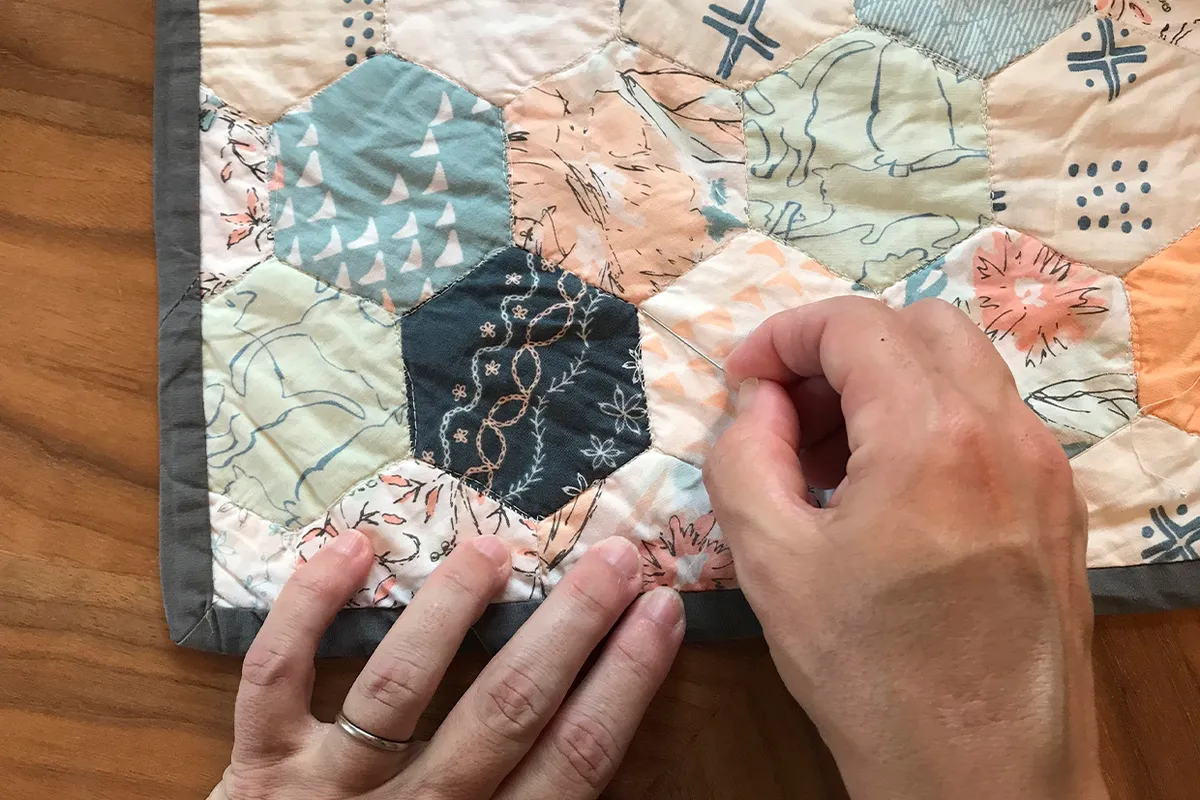
Check the colours won’t run
Take a white, clean cloth and dab it in a bowl of water. Now, rub the cloth gently onto a few sections of your quilt. If colour transfers on to the cloth, proceed with caution – washing your quilt at home may cause the quilt to fade.
If this does happen, it’s worth getting some advice from the pros. Contact your local dry cleaner for advice. Be aware though: dry cleaning isn’t always the solution, and can still make your fabrics bleed or fade. We recommend checking with the dry cleaner first to see if they have prior experience of handling old or handmade quilts.
If you find no colour rubs on to the white cloth, then your quilt should be colourfast.
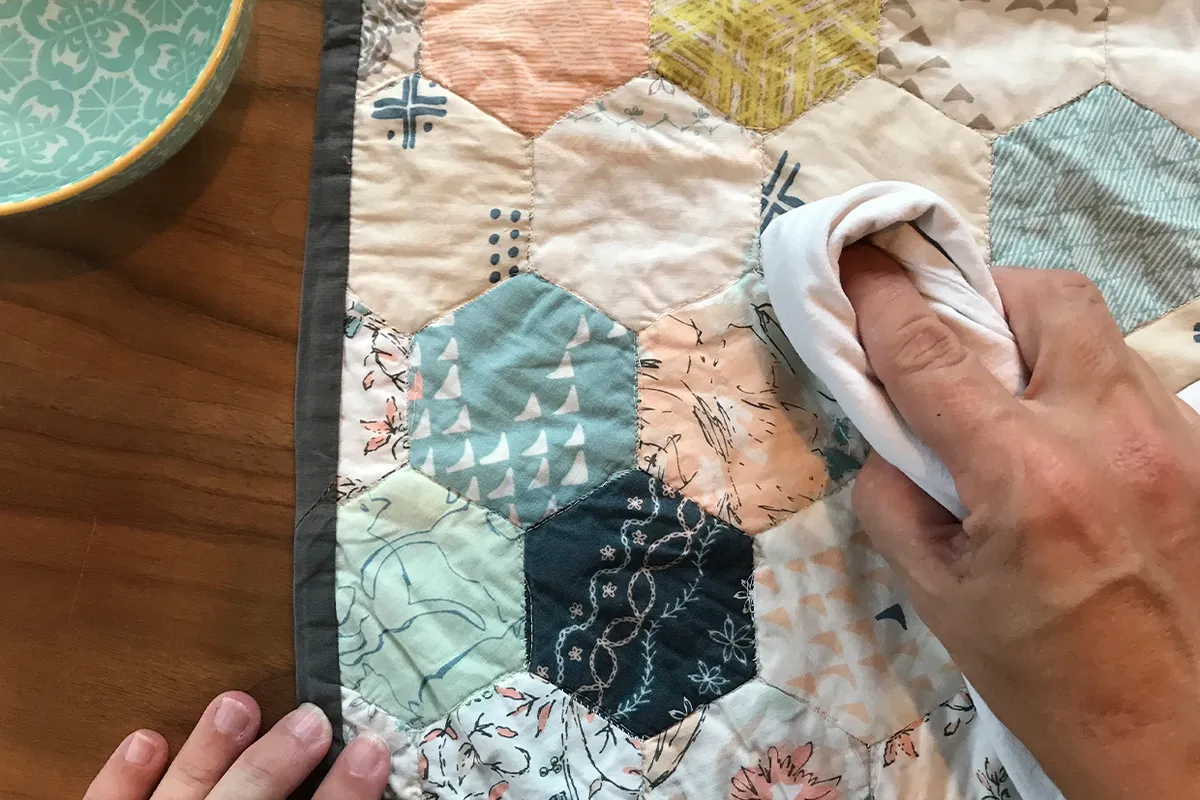
Check for stains
The last check before you start washing your quilt is to see whether your quilt has any stains. If so, treat these with a gentle stain remover before you wash. You can also try using a small amount of baby shampoo, mixed with water and applied with a clean white cloth, to gently rub away the stains.
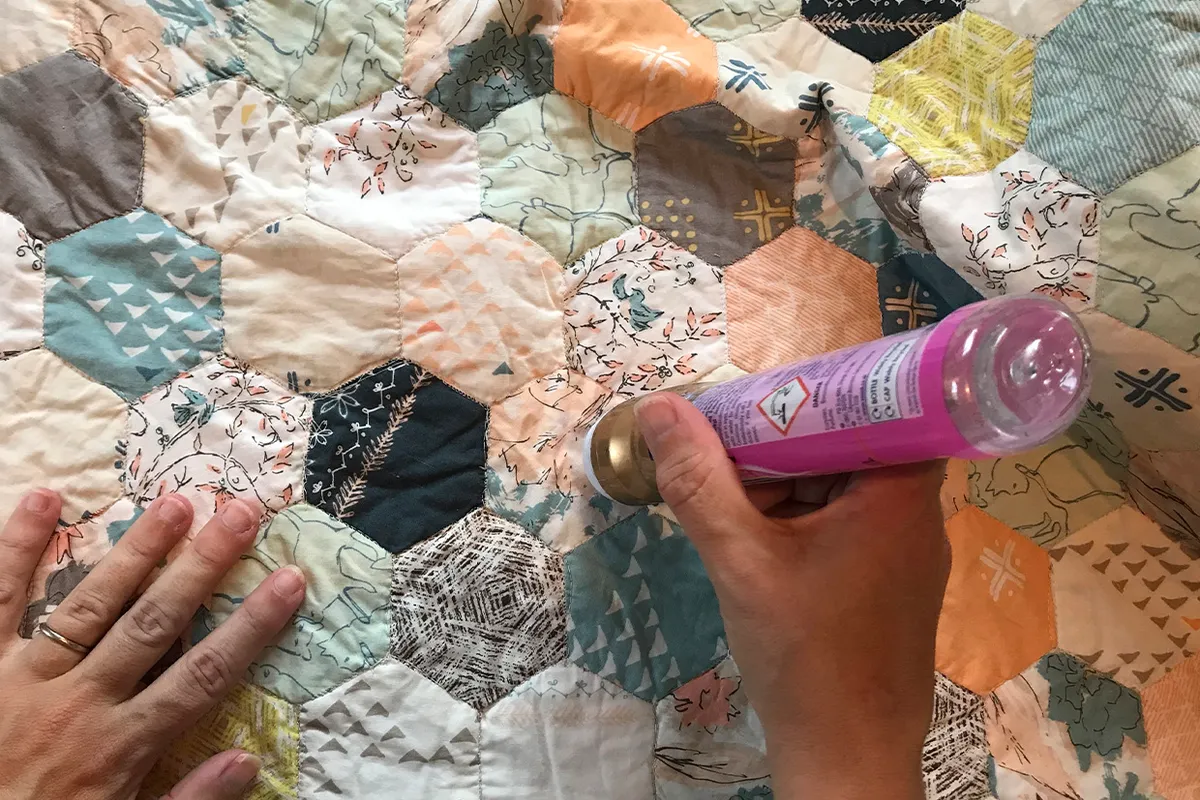
Now you’re ready to start washing your quilt!
